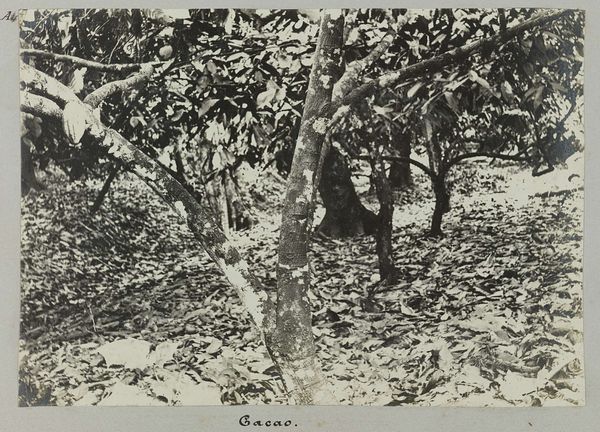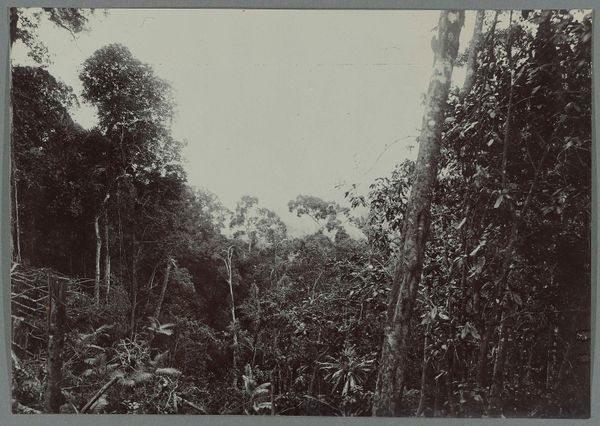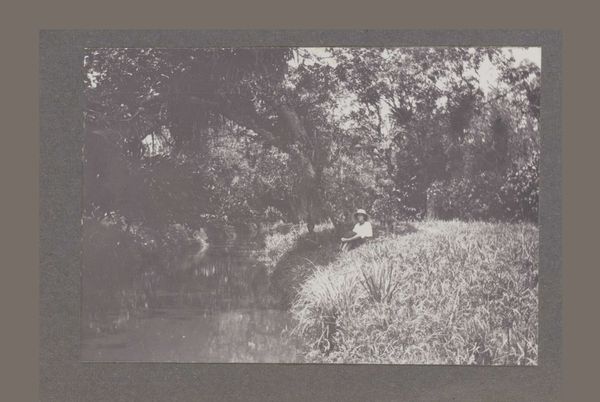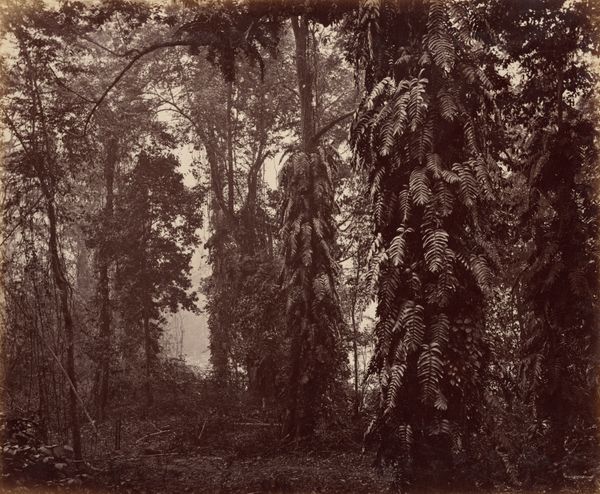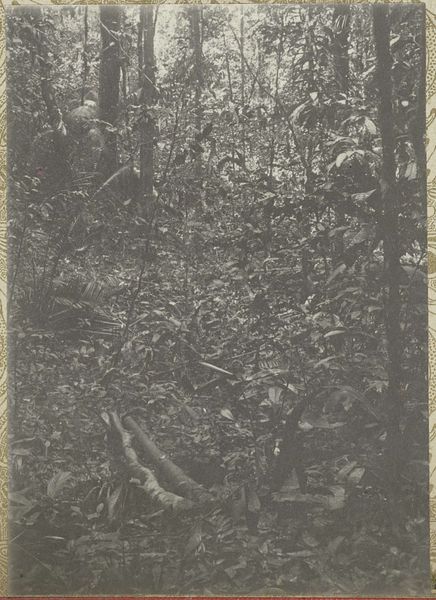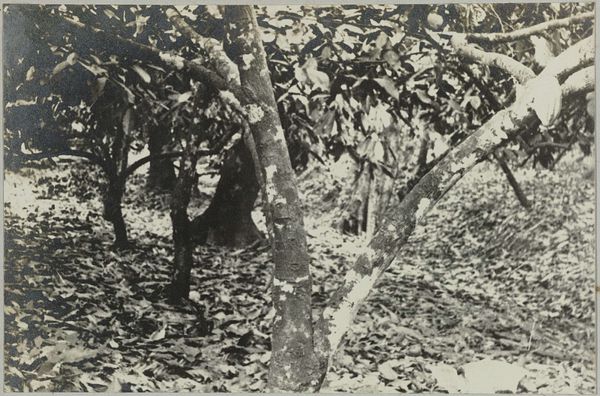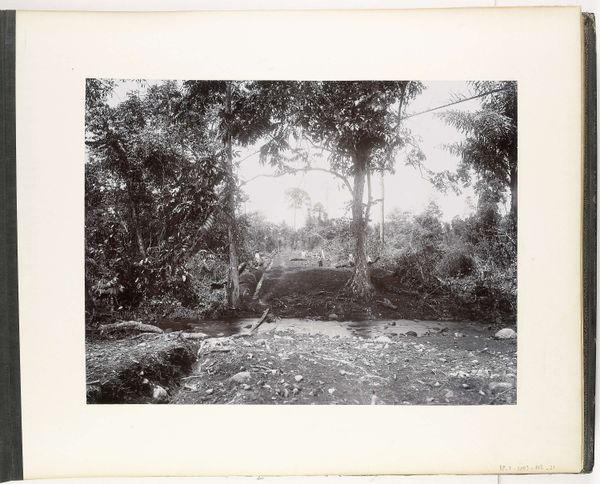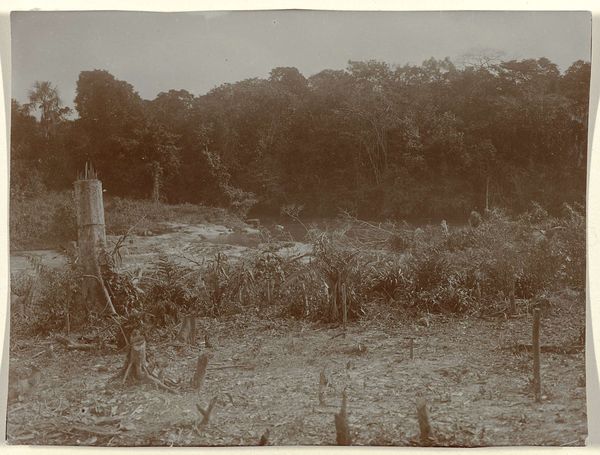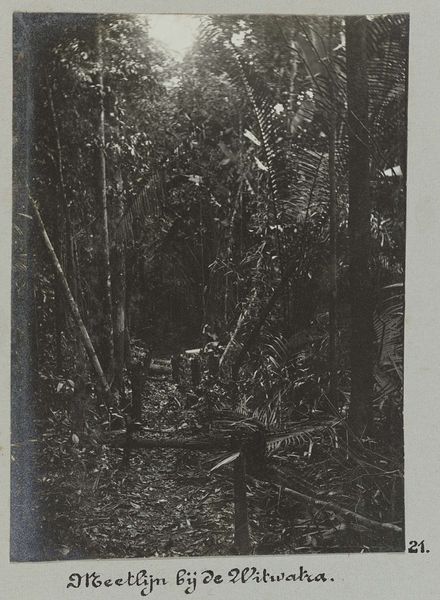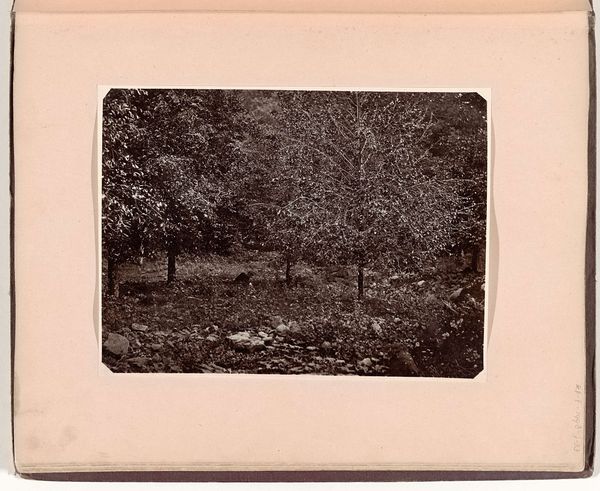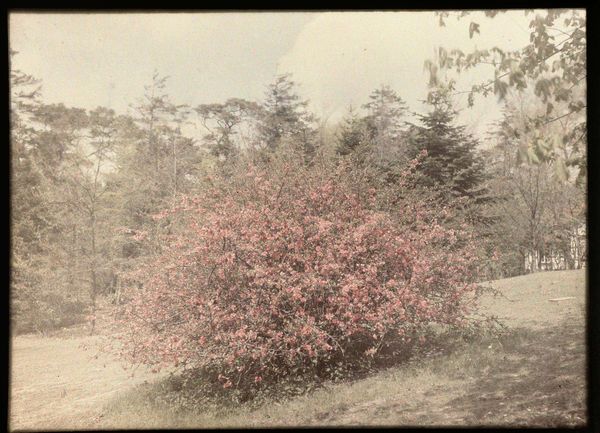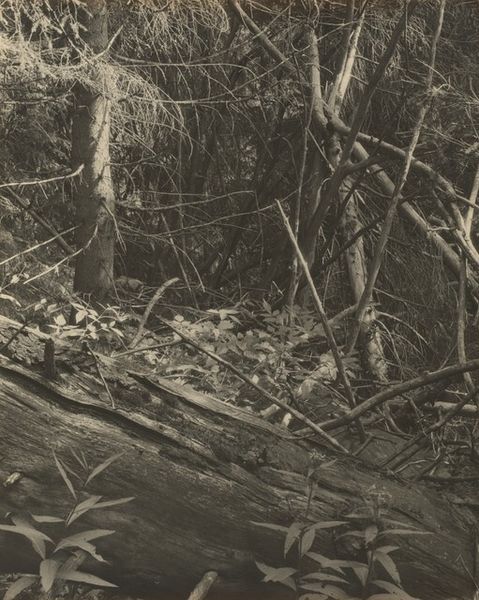
print, photography
#
organic
#
african-art
# print
#
landscape
#
photography
#
modernism
#
realism
Dimensions: height 87 mm, width 115 mm
Copyright: Rijks Museum: Open Domain
Curator: This is Theodoor Brouwers's photograph, "Plantage Accaribo," likely taken sometime between 1911 and 1932. It's currently held in the Rijksmuseum collection. The silver gelatin print offers a rather unique landscape. What strikes you initially? Editor: A somber stillness, certainly. The tonality pushes a bleak mood onto a potentially vibrant subject. There is an overwhelming earthiness too; you can almost smell the damp soil and decaying foliage. Curator: Indeed. Consider how Brouwers employs the photographic medium. Note the deep focus, rendering both near and distant elements with comparable clarity. The eye struggles to find a single point of focus, emphasizing instead the interconnectedness of the plantation ecosystem. Editor: Interconnectedness certainly wasn't accidental here. It reads like a stark document of labor and the materials extracted from the land, an illustration of industry. This medium itself becomes evidence of the landscape's commodification. How were the workers considered within this economy of extraction? Curator: That invites critical exploration. While the figures of laborers aren't depicted directly, their presence is nonetheless felt in the manicured rows of saplings and the cleared undergrowth. Editor: Right. The ordered plantings expose labor management that exploits workers' energy; how do you read into the materiality and means of the photograph's making? Was there exploitation in the process? Curator: Technically, Brouwers' mastery over the medium results in a dynamic interplay of light and shadow. Notice how the diffuse sunlight filters through the canopy, creating patterns of chiaroscuro on the forest floor. Semiotically, the photograph communicates themes of cultivation, nature, and colonial enterprise. Editor: Brouwers delivers something so complex. We need to investigate these photographic techniques and consider who labored and what materials were used to make the print possible. Thank you. Curator: My pleasure. It leaves us with questions, doesn't it, about our relationship with landscapes and the images that shape them.
Comments
No comments
Be the first to comment and join the conversation on the ultimate creative platform.
